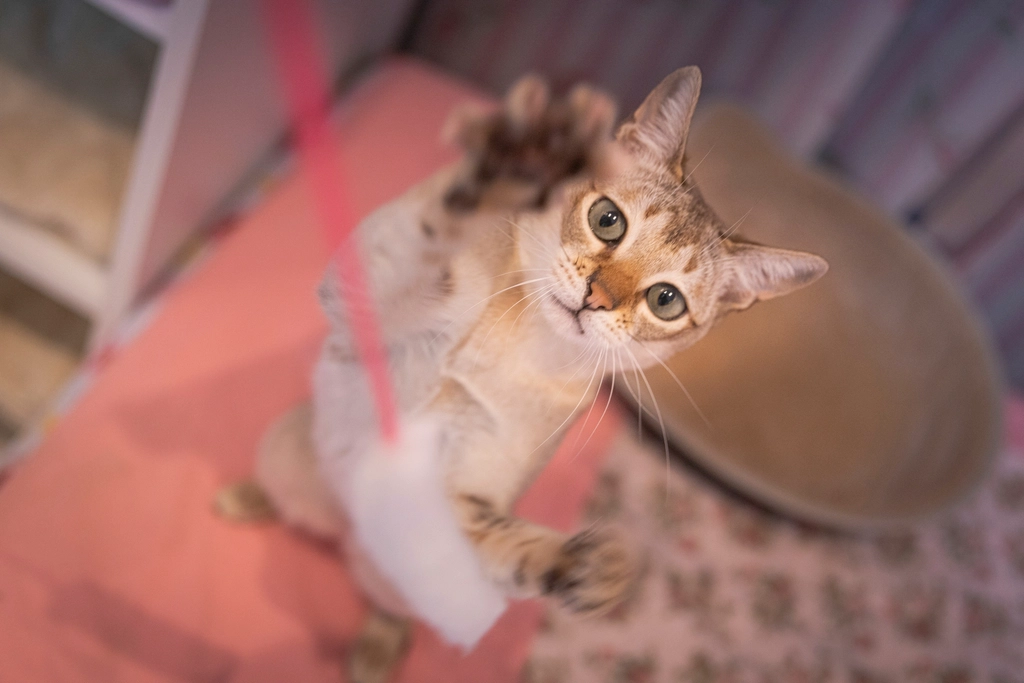Have you ever looked at your cat sprawled out on the couch, surrounded by a sea of toys, and wondered, “Is my cat actually bored?” It’s easy to assume that a few squeaky mice and a feather wand are enough to keep any feline entertained, but the truth just might surprise you. Boredom in cats is real, and it can sneak up even in the most toy-filled homes. Some cats seem to have everything, yet still find themselves chasing shadows or staring out the window for hours. So how can you tell if your furry friend is secretly longing for more? The answer might change the way you see your cat’s world—and maybe even your own.
Understanding Feline Boredom

Boredom in cats isn’t just a human projection—it’s a genuine emotional state that can affect their happiness and well-being. While cats have a reputation for being independent and low-maintenance, they’re actually complex creatures with a deep need for stimulation. Just like us, cats crave novelty and engagement. If those needs aren’t met, boredom creeps in quietly, often going unnoticed until it leads to bigger behavioral problems. It’s a misconception that cats are always perfectly content to lounge alone. In reality, their minds are busy, and without enough variety, they can become restless or even a little depressed.
Why Toys Alone Aren’t Always Enough

It’s tempting to think that a basket of toys solves everything, but cats are clever and quickly learn what each toy does. If the toys never change or don’t mimic natural prey, they lose their appeal. Think of it like eating the same meal every day—no matter how tasty, you’d get sick of it fast. For your cat, the world needs to feel new and exciting, not like a rerun they’ve already seen a dozen times. Sometimes, a lack of interaction or variety turns those bright, bouncy toys into nothing more than colorful clutter.
The Telltale Signs of a Bored Cat

Spotting boredom in cats isn’t always easy, but there are some clear signs. You might notice your cat sleeping more than usual or staring blankly into space. Some cats become destructive—scratching furniture, knocking things over, or chewing on cords. Others may over-groom, pulling out fur in frustration, or meow excessively for attention. If you’ve ever caught your cat swatting at nothing or pacing the same path over and over, boredom could be the culprit. These behaviors are your cat’s way of saying, “I need more to do!”
Environmental Enrichment: The Key to a Happy Cat

Creating a stimulating home environment is essential for your cat’s mental health. This goes beyond just tossing out some new toys—it’s about enriching their world in creative ways. Cats love to climb, scratch, and explore. Adding cat trees, shelves, and scratching posts gives them new territories to conquer. Window perches turn the outdoors into a living movie, and even rearranging furniture can make the familiar feel exciting again. The goal is to make every day a little different, just like in the wild.
The Role of Playtime in Beating Boredom

Interactive play is one of the best ways to keep your cat engaged. Unlike passive toys, interactive play (with you at the other end of the string or wand) mimics the hunt and chase that cats are hardwired to love. Regular play sessions get their bodies moving and their minds working. Try switching up the games every few days so your cat never knows what’s coming next. It’s not just about exercise—it’s about bonding, too. Playing together can turn an ordinary day into an adventure.
Rotating Toys to Keep Things Fresh

One trick to keep toys interesting is to rotate them out. Instead of leaving all the toys out every day, stash a few away and swap them out weekly. This way, toys feel new and exciting when they reappear. It’s a bit like finding a forgotten treasure chest—suddenly, that old mouse is the coolest thing in the house again. You can even make old toys “new” by adding catnip or changing where you hide them. It keeps your cat guessing and eager to play.
DIY Fun: Homemade Cat Entertainment

You don’t have to spend a fortune to entertain your cat. Sometimes, the simplest things are the best. A cardboard box can become a fortress, and a paper bag transforms into a mysterious cave. Homemade puzzle feeders using toilet paper rolls or egg cartons challenge your cat’s brain while rewarding them with treats. Even crumpled paper balls or empty water bottles can spark a wild game. When you get creative, your cat will thank you for it—with purrs and playful leaps.
Social Interaction: More Than Just Toys

Cats may act aloof, but they often crave social interaction. Spending time together, whether it’s cuddling on the couch or chatting while you cook, can make a world of difference. Some cats even enjoy learning tricks or walking on a leash. If you’re home a lot, your cat will likely follow you from room to room—not just because of curiosity, but because your company is comforting. Making time for daily connection reassures your cat that they’re not alone in their world.
Introducing New Challenges With Food Puzzles

Food puzzles bring out your cat’s inner hunter. These toys make your cat work for their meal, which taps into their natural instincts. There are many types—from simple treat balls to complex mazes—but you can also make your own at home. The key is to make your cat think and move, turning mealtime into an adventure. Not only does it prevent boredom, but it also helps with portion control and keeps your cat at a healthy weight. Watching your cat “hunt” their dinner is surprisingly entertaining, too.
The Power of the Window View

Setting up a comfy perch by a window can be a game-changer. The outside world is full of sights and sounds—birds fluttering, leaves blowing, people walking by. For indoor cats, this “cat TV” can provide hours of fascination. Some cats love watching squirrels and bugs, while others just enjoy basking in the sun. Adding a bird feeder outside the window can make the show even more exciting. The world beyond the glass is always changing, keeping your cat’s mind active.
When Company Counts: The Multi-Cat Household

Sometimes, the best toy for a bored cat is another cat. While not every feline wants a companion, many benefit from the excitement and social interaction of living with another cat. Play-fighting, chasing, and grooming each other are all natural behaviors that help relieve boredom. Of course, introducing a new cat requires patience and planning. But when it works, the friendship that blossoms can be heartwarming—and both cats may find new joy in each other’s company.
Understanding Your Cat’s Unique Personality

Every cat is different. Some love to play for hours, while others prefer quiet time and gentle strokes. Understanding your cat’s unique personality is key to knowing what will keep them entertained. Watch how your cat reacts to different activities and toys. Maybe they love the laser pointer but ignore the jingle ball, or perhaps they prefer cardboard boxes to fancy cat condos. Tailoring your approach to match your cat’s preferences makes them feel seen and appreciated.
Signs Your Cat Needs a Change

If your cat is showing signs of boredom, it’s important to act quickly. Look for changes in eating habits, increased vocalization, or sudden aggression. These behaviors may signal that your cat’s routine needs a shake-up. Sometimes, just ten extra minutes of play can make a huge difference. If your cat seems withdrawn or anxious, try introducing new toys, games, or window views. A small change can spark new interest and help your cat feel happier and more secure.
Health Risks Linked to Boredom

Boredom doesn’t just make cats grumpy—it can also affect their health. Cats who don’t get enough stimulation are more likely to become overweight, develop urinary issues, or engage in self-destructive behaviors like over-grooming. Some even become depressed, losing interest in food or play altogether. Keeping your cat engaged isn’t just about fun—it’s a crucial part of their well-being. A lively, interesting environment can help prevent many common health problems in indoor cats.
When to Seek Help From a Professional

Sometimes, boredom can lead to behaviors that are hard to manage on your own. If your cat is showing severe signs of stress, aggression, or withdrawal, it might be time to consult a veterinarian or animal behaviorist. These professionals can help rule out medical issues and suggest new ways to enrich your cat’s environment. It’s never a sign of failure to ask for help—sometimes, a fresh perspective is just what you and your cat need.
Making Every Day an Adventure

Life with a cat doesn’t have to be predictable. Try to see your home through your cat’s eyes—what new smells, sights, or textures can you introduce? Even small changes, like moving a chair or adding a new blanket, can make the ordinary feel extraordinary. Take time each day to do something special with your cat, whether it’s a new game or a cozy nap together. Your efforts can turn boredom into excitement and help your cat live their very best life.

Linnea is a born and bred Swede but spends as much time as possible in Cape Town, South Africa. This is mainly due to Cape Town’s extraordinary scenery, wildlife, and atmosphere (in other words, because Cape Town is heaven on earth.) That being said, Sweden’s majestic forests forever hold a special place in her heart. Linnea spends as much time as she can close to the ocean collecting sea shells or in the park admiring puppies.





